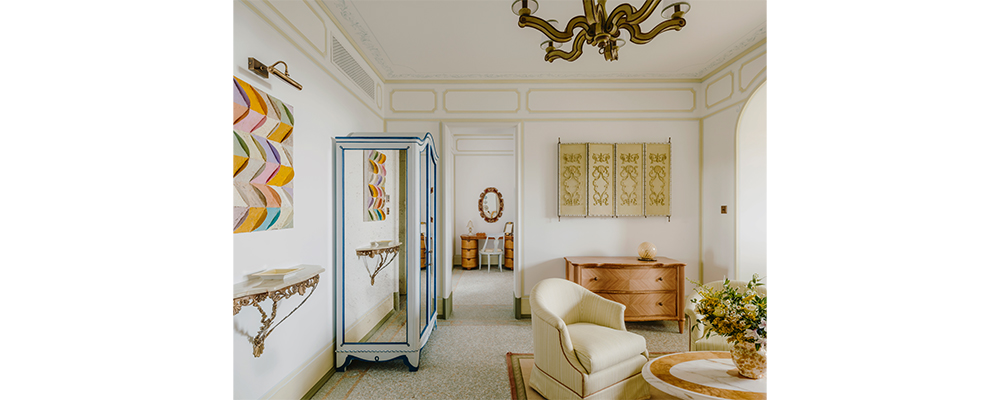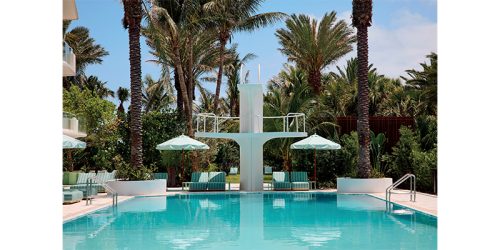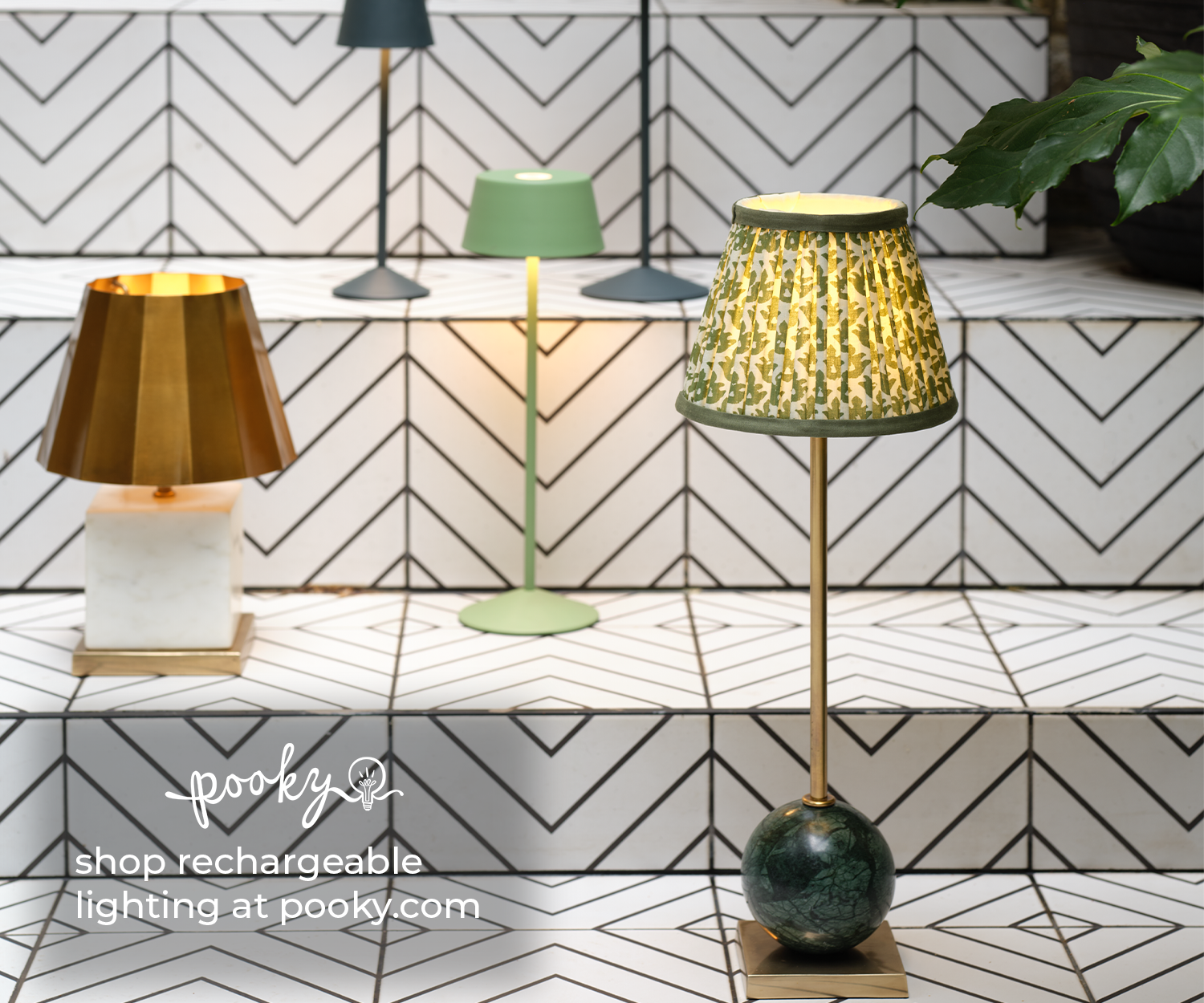Splendido, A Belmond Hotel, Portofino, Italy
Elegant, luxurious and unmistakably Splendido. Portofino’s Grand Dame begins a new chapter.
Portofino’s Splendido, A Belmond Hotel, has reopened after a two-year renovation led by Martin Brudnizki Design Studio – a careful, highly detailed reworking of one of Italy’s most recognisable hotels. 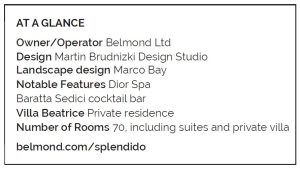
Sitting above the village on a steep hillside surrounded by pine, citrus and bougainvillaea, Splendido has always had cinematic appeal. The update doesn’t try to rewrite its identity. Instead, it refines and expands on what made it iconic in the first place: location, history, craftsmanship – and a certain ease that comes with being quietly sure of itself.
The former 16th-century Benedictine monastery is now layered with a clearer sense of its Ligurian roots. Local materials are everywhere. In the hallways, floors are laid in a brightened black-and-white pattern of Carrara marble and Ardesia stone, echoing the original flooring while introducing a lighter tone. A recurring medallion motif references historic architectural details – subtle, but visible across corridors, rooms, and mirrors. The walls are painted with floral and architectural detailing in homage to the Margerin frescoes added in the 1960s, and lighting throughout the hotel includes shell-shaped carved wall sconces by Bartolozzi & Maioli Firenze, complete with Genovese Lampasso fabric shades.
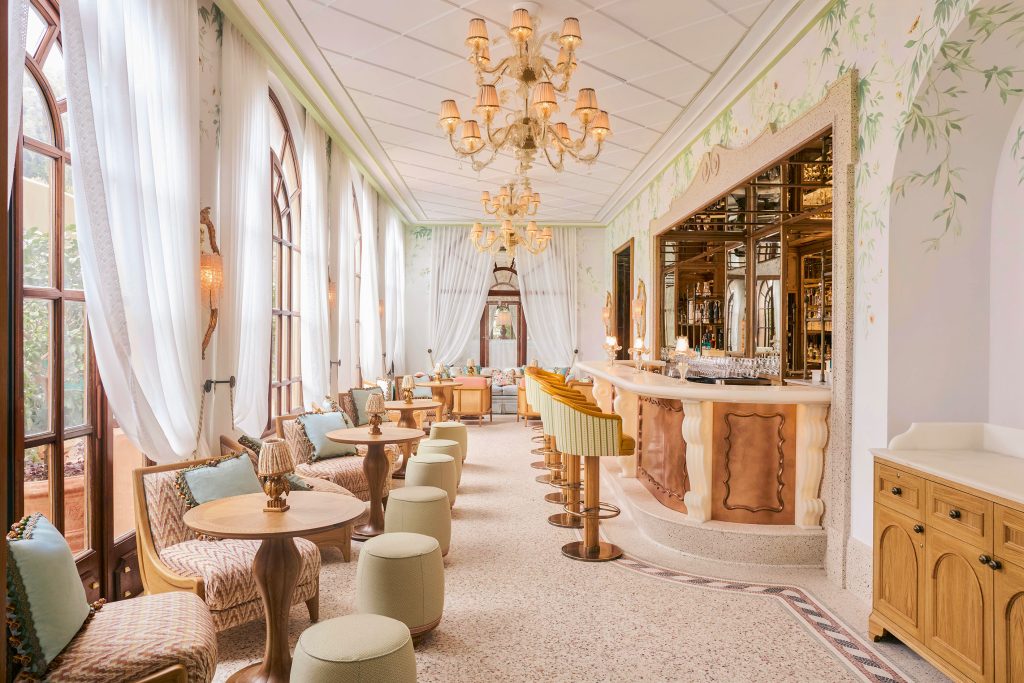
Floors and walls are finished in Graniglia alla Genovese, this time in rosso Verona and pale sandstone, with mosaic inlays depicting marine and floral motifs – shells, seahorses, flowering vines.
Furniture in the hallways is largely antique – sourced from estate sales and dealers across Liguria – some restored and painted in traditional Genovese style. These quiet, almost domestic insertions give the hotel a new kind of rhythm: more layered, more tactile, and far more personal.
In the rooms, the flooring switches to Graniglia alla Genovese in Castello Brown’s red and brown tones – a material that predates terrazzo and places the guest rooms firmly in a local vernacular. The colour palette takes direct cues from the surrounding landscape: acorn green, terracotta, pale yellow and soft-white. Beds with traditional Midollino weave headboards, inspired by Chiavari rattan, are flanked by ceramic table lamps from Albisola and marble-topped bedside tables with Bartolozzi & Maioli-carved legs. Their work also appears on dressing tables, coffee tables, and drinks cabinets – all bespoke and intricately made, without drifting into pastiche.
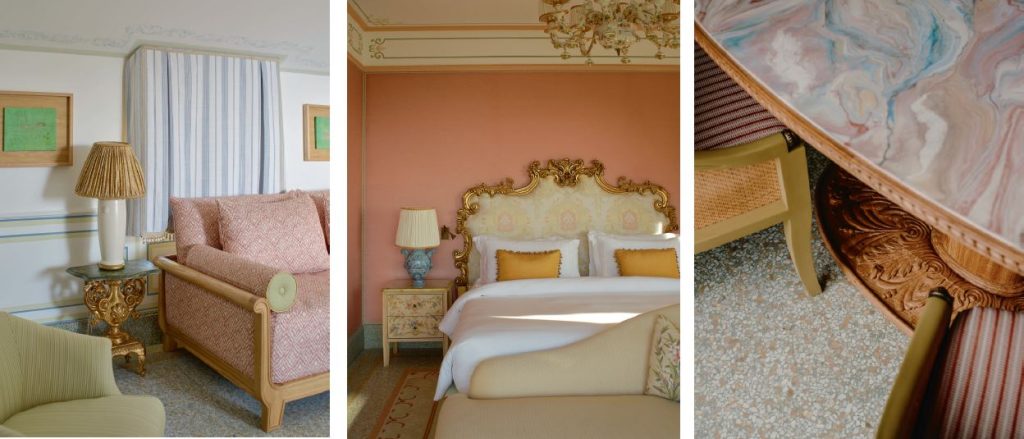
In the rooms, the flooring switches to Graniglia alla Genovese in Castello Brown’s red and brown tones – a material that predates terrazzo and places the guest rooms firmly in a local vernacular.
Dressing tables feature inlaid marquetry on their undersides; stools are repurposed from the hotel’s original restaurant and refinished. Bathrooms are just as considered. Floors and walls are finished in Graniglia alla Genovese, this time in rosso Verona and pale sandstone, with mosaic inlays depicting marine and floral motifs – shells, seahorses, flowering vines. The medallion motif reappears in the mirrors above double vanities. Lighting comes from Murano glass bulkheads, and vanity units are clad in Midollino weave, flanked by antique Genovese benches and bespoke twisted-metal shelving in golden marble.
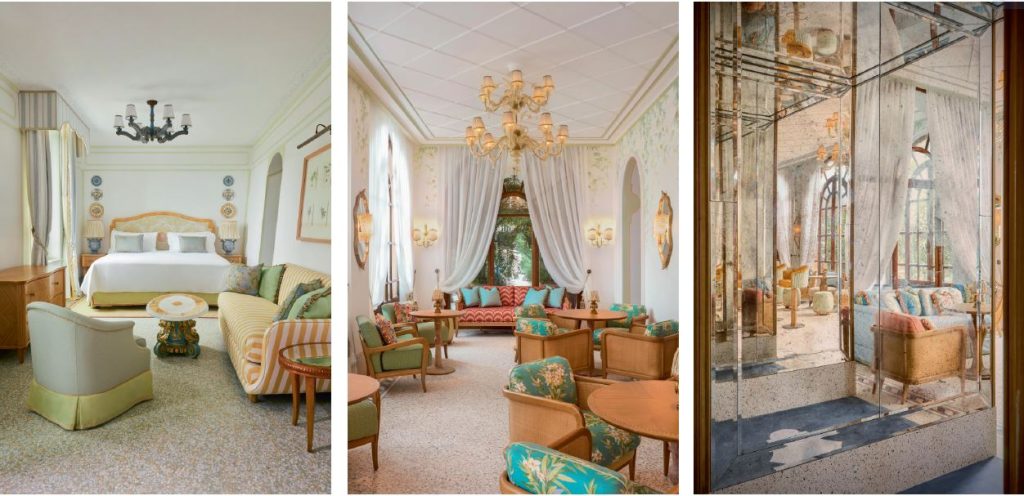
Lighting comes from Murano glass bulkheads, and vanity units are clad in Midollino weave, flanked by antique Genovese benches and bespoke twisted-metal shelving in golden marble.
Each room also includes a large, wardrobe-scale drinks cabinet – mirror-fronted, lined with marquetry, and stocked with a refrigerated wine drawer. Some are finished in silver leaf, others with antiqued mirror. Soft furnishings – from upholstered panels to sweeping striped curtains – are all custom-made. Artwork is a mix of reframed botanical prints and contemporary Itali – pieces – gain, low-key, but consistent.
The Baronessa Suite builds on this language with moiré silks, a carved timber agapanthus headboard, and antique furniture restored and upholstered in a mix of custom fabrics. The layout includes a separate dressing area, a powder room with a hand-painted trellis and bougainvillaea mural, and a private terrace furnished with Bonacina rattan seating and a breakfast table – one of the most prized spots on the property, with long views over the Gulf of Tigullio.
Outside, the pool terrace has been redesigned by landscape architect Marco Bay and now includes a striped retractable sunroof in green and yellow. The flooring returns to Graniglia alla Genovese, with Murano glass pendants lighting the space after dark. Furniture includes Bonacina chairs with piped cushions in coral, green and blue, and Carrara marble-topped tables with carved detailing.
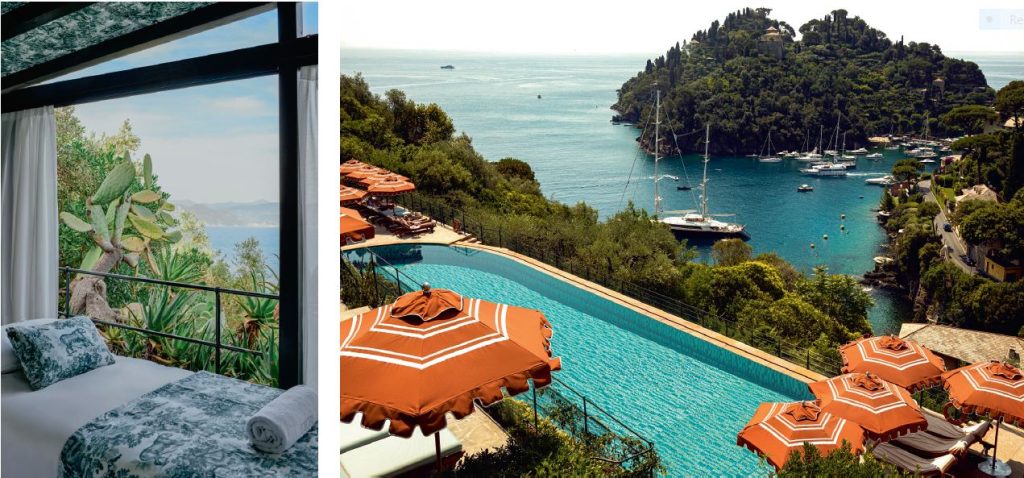
A more casual outdoor pool bar features a green-and-white tiled front, a built-in pizza oven, and a back wall of exposed natural stone. The planting feels deliberately porous – creepers, vines and textured greenery integrate with the architecture rather than sitting beside it.
Baratta Sedici, the new indoor bar, acts as an extension of the garden. A full hand-painted botanical mural wraps around whitewashed walls, while blond oak, onyx and terracotta set a warm, grounded tone. All furniture is custom, made in workshops across Florence, Genoa, Venice and Milan. The cocktail menu follows suit, led by local spirits and ingredients – including standouts like La Vela (Portofino Gin, Campari, Amaro Camatti, Pineo) and U Chef, which mixes gin with tomato, horseradish and Seven Pod pepper. There’s also a strong backbar of vintage spirits and small-production Ligurian wines.
Completing the update is the arrival of Villa Beatrice, a private three-storey villa five minutes from the main hotel. Originally a family residence, it has been restored with a sharp focus on original architectural detailing – Gothic Revival arches, Art Nouveau murals, decorative stonework – and converted into a standalone summer home with access to the sea, private gardens and a formal dining room. It fits neatly into the hotel’s new rhythm: slower, more personal, and more spatially generous.
As an overhaul, the new Splendido feels neither nostalgic nor overtly contemporary. It finds its balance in materials – mostly local – and in craft. It doesn’t force a new identity but layers the existing one with more texture and better flow. Brudnizki’s vision sits somewhere between Riviera folklore and quiet modern luxury. It’s not about making a statement. It’s about making the right one – and leaving enough space for the view to speak for itself.



